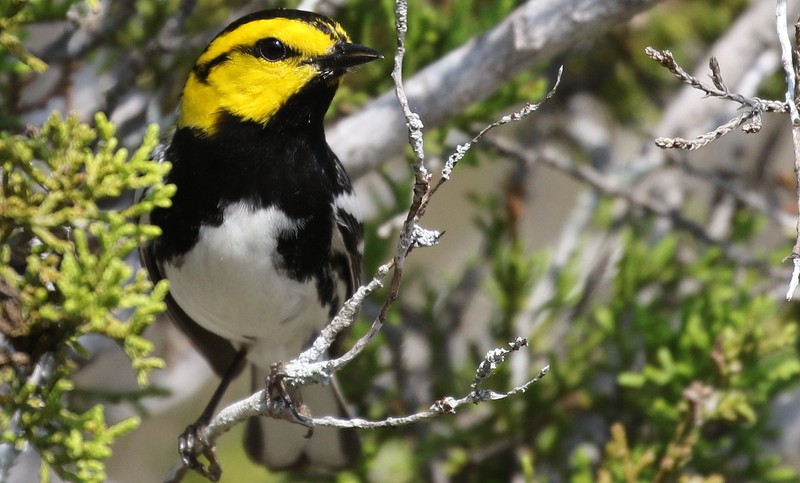

The Golden-cheeked Warbler (Setophaga chrysoparia) is a Neotropical migratory songbird that is listed as endangered under the U.S. Endangered Species Act, breeds exclusively in central Texas, and is heavily impacted by habitat conversion. The species relies on mixed ashe juniper (Juniperus ashei) and oak (Quercus) woodlands for nest-building and shelter during the spring and early summer months. Using land-cover and disturbance data spanning 1985 to 2018, we conducted a geospatial analysis to quantify changes and identify shifts in breeding-habitat quantity and suitability. Since 1985 13% of all forests within the Warbler’s breeding range have been disturbed, with greater incidences near the metropolitan areas of San Antonio (32%) and Austin (24%). Additionally, there was a 42% decrease in suitable habitat (i.e., intact forests primarily composed of ashe juniper and oak stands) and a decrease in mean patch size. Declines of suitable habitat were smaller in protected areas, but protected areas only represent 10% of suitable habitat in the breeding range. Drastic declines in the most-suitable habitat suggest that previous lower resolution estimates of habitat conversion may underestimate true habitat loss as degradation may have an impact on the ecological viability of remaining forests for Golden-cheeked Warbler nesting. Further evidence suggests that the few protected areas within the Texas range continue to play a significant role in Warbler breeding. Researchers and managers can use these results to prioritize conservation action and inform upcoming species status determinations.